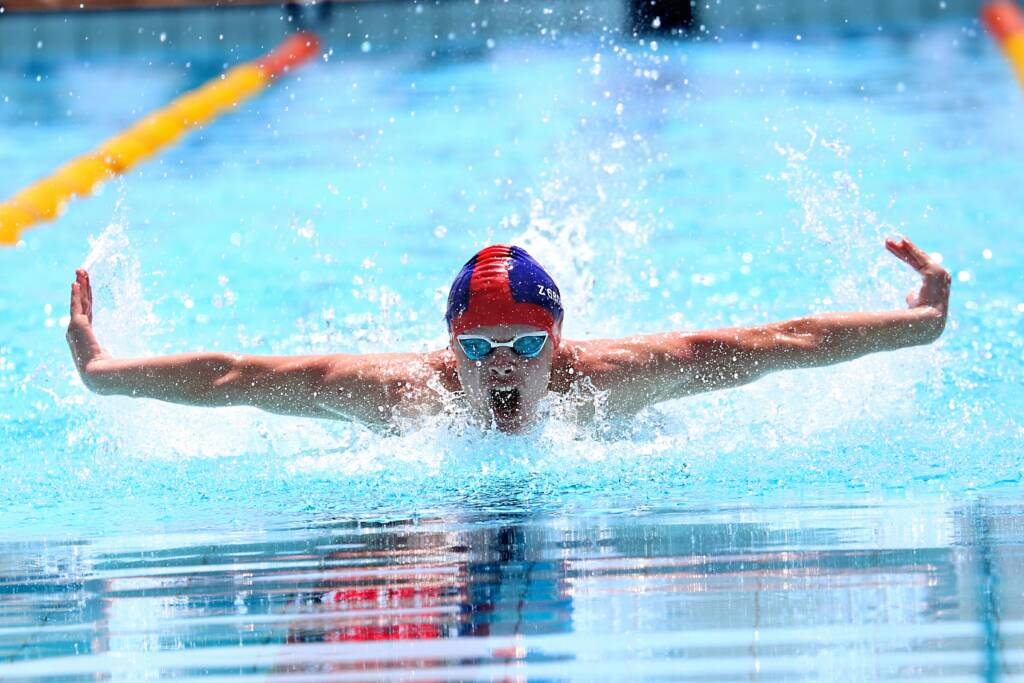In the world of broadcasting, one thing has become clear: 4K is here to stay. As the demand for ultra-high-definition (UHD) content skyrockets, so does the need to transport these signals effectively across production setups, live broadcasts, and post-production environments. Whether it's a sports event or a live concert, delivering flawless 4K content has become a must. But how exactly is a 4K video signal delivered across your equipment? Let’s have a look into it.
What’s the Deal with 4K?
Before we dive into how 4K video is transmitted, let’s talk numbers. A 4K signal is made up of 3840x2160 pixels—that’s four times the resolution of your standard HD (1920x1080). This means crisper images, finer details, and a more immersive experience. But all this goodness comes at a cost: data. Lots and lots of it. If you want to move that much data from a camera to a switcher or broadcast monitor, you need an efficient method. That’s where SDI links and different signal-splitting techniques come in.
4K Transmission: Why Signal splitting Matters
When dealing with 4K video transmission, the sheer volume of data involved makes it challenging to send the signal over a single link using older technology. As already discussed, an ultra-high-definition (UHD) video frame contains four times the number of pixels as a standard HD frame, and when transmitted at higher frame rates, the data requirements surge even more. To handle this enormous amount of data, signal splitting techniques are used. These techniques break the UHD signal down into smaller, more manageable pieces, allowing it to be transmitted over available infrastructure.
Signal splitting ensures that systems with lower bandwidth capacity can still deliver high-resolution video by distributing the workload across multiple transmission links. This approach helps avoid bandwidth limitations, prevents signal loss, and ensures the integrity of the transmitted image, especially when high resolutions and frame rates are involved. Additionally, splitting the signal makes it easier to scale the transmission system as technology improves, without requiring a complete overhaul of existing infrastructure.
Signal Splitting Techniques
The way 4K signals are split and transported boils down to two techniques: Two Sample Interleave and Square Division Method.
2 Sample Interleave (2SI)
2SI is the go-to choice for modern broadcasting systems. It keeps the image in one continuous piece by dividing the 4K image into adjacent pixels. It interleaves the pixels from two samples (hence the name "2 Sample Interleave") across the entire frame. Think of it as slicing a loaf of bread: you cut even slices but keep the structure intact. When transmitted, the signal arrives as a single continuous piece, ensuring seamless reassembly. This method avoids any visual breaks or artifacts, making it the preferred choice in professional workflows

Square Division Method (SDM)
SDM, on the other hand, is an older method. It splits the 4K image into four quadrants—each a smaller 1920x1080 slice of the full image—and sends them separately over different links. Imagine cutting your cake into four random pieces and having someone else put them back together. Sometimes, this process is smooth, but sometimes, the pieces don’t line up perfectly. Because of this, SDM can cause visible seams or alignment issues, making it less ideal for modern
setups. So, 2SI is the clear winner in today's workflows, but SDM is still used in some legacy systems that don’t support newer tech.
SDI standards
Now that we've covered how the image is split, the next step is transmitting the signal. Serial Digital Interface (SDI) standards are commonly used for this, but not all SDI standards are the same. Different SDI versions can handle different amounts of data, making them more or less suited to 4K video depending on the frame rate and resolution.
3G-SDI: The Classic Transmission Standard
3G-SDI was a revolutionary standard when it was introduced, but it can't handle 4K resolution on its own. To transmit a 4K signal using 3G-SDI, you need to use a method called quad-link, which we’ll discuss later.
- Bandwidth: 3 Gbps per cable
- Resolution: 4K @ 30fps (quad-link)
- Standard: SMPTE ST 425-5
6G-SDI: A Streamlined Solution for Lower Frame Rates
As technology advanced, 6G-SDI was introduced. It allows for the transmission of 4K at 30fps over a single cable, simplifying the process and reducing the potential for errors.
- Bandwidth: 6 Gbps
- Resolution: 4K @ 30fps
- Standard: SMPTE ST 2081-1
While 6G-SDI offers a more straightforward approach than 3G-SDI, it can't handle 4K at 60fps over a single cable. That’s where 12G-SDI comes in.
12G-SDI: The Ultimate Standard for High Frame Rates
For the most demanding 4K setups, 12G-SDI is the best choice. It can transmit 4K at 60fps with just one cable, reducing complexity and virtually eliminating synchronization issues.
- Bandwidth: 12 Gbps
- Resolution: 4K @ 60fps
- Standard: SMPTE ST 2082-1
This is the standard used in most modern, professional setups, where high-quality 4K video and high frame rates are crucial.
Quad, dual or single link configurations
Once you’ve chosen your SDI standard (3G, 6G, or 12G), the next step is determining how many cables you need. This is where quad-link, dual-link, and single-link configurations come in.
Quad-link: Four Cables for 4K
In a quad-link setup, four separate 3G-SDI cables are used. Each cable carries one-quarter of the 4K signal, whether it's split via 2SI or SDM. The receiving device then reassembles the four parts into a complete UHD image. This method was more common in older setups and is mainly used with 3G-SDI.
- Use Case: Older systems, 4K @ 30fps
- Limitations: Clunky and prone to synchronization issues
Dual-link: Cutting it Down to Two Cables
With dual-link, the number of cables is cut down to two. This setup can use two 6G-SDI cables to transmit 4K at 60fps or two 3G-SDI cables for 4K at 30fps. It’s more efficient than quad-link but still requires tight synchronization between the two cables.
- Use Case: Studio setups, 4K @ 60fps with 6G-SDI
- Advantages: More efficient than quad-link
Single-link: The One-Cable Solution
Finally, we have the single-link setup, which uses just one 12G-SDI cable to transmit 4K at 60fps. This is the most efficient and modern option, eliminating the need for multiple cables and reducing the chances of synchronization issues.
- Use Case: Live events, high frame rate 4K
- Advantages: Simplified, reliable, and ideal for modern infrastructure
Let’s take a look at how these setups play out in the real world:
Scenario 1: Broadcasting a Sports Event with 12G-SDI
You’re broadcasting a live sports event in 4K @ 60fps. By using 12G-SDI, you can send the entire signal over a single cable, simplifying the setup and eliminating synchronization headaches.
Scenario 2: Studio Setup with Dual-link 6G-SDI
In a studio environment where you’re shooting 4K @ 60fps, you might opt for dual-link 6G-SDI. This gives you high-resolution video without needing to upgrade your entire infrastructure to 12G-SDI.
Scenario 3: Live Concert Using Quad-link 3G-SDI
For a live concert using older equipment, you may have to rely on quad-link 3G-SDI to transmit 4K @ 30fps. Each cable carries one-quarter of the image, which then has to be reassembled at the receiving end.
Looking Ahead: The Future of 4K Video Transmission
As the broadcast industry evolves, the future of 4K video transmission is increasingly centered around IP-based solutions. Standards like SMPTE ST 2022-6, SMPTE ST 2110 facilitate the efficient and flexible handling of video, audio, and data, establishing IP as the new benchmark for live events and studio productions. To fully understand the evolution of broadcasting technology, it’s essential to compare the two primary standards for IP video transmission:
- SMPTE ST 2022-6 encapsulates video, audio, and ancillary data into a single stream over IP. This approach simplifies the transition from traditional SDI workflows but limits flexibility due to the bundling of all elements.
- In contrast, SMPTE ST 2110 separates video, audio, and metadata into distinct essence streams. This modularity allows for advanced workflows where each component can be processed or routed independently, making it ideal for high-end productions with multiple channels and dynamic requirements. The adaptability of ST 2110 positions it as the preferred
choice for complex live setups.
With SMPTE ST 2110, video and audio are transmitted as separate packets over the network. Each packet represents a segment of the video frame, accompanied by timing information, and is sent using RTP (Real-time Transport Protocol) over UDP. This packetization enhances efficiency in managing multiple 4K streams while ensuring smoother handling of high-resolution content. One of the most significant advantages of IP-based transmission is its ability to send uncompressed 4K video. Unlike heavily compressed formats used in online streaming, uncompressed video retains intricate details essential for professional broadcasts, particularly in live sports and high-end productions. Additionally, IP networks support multicast streaming, allowing a single stream to be distributed to multiple destinations simultaneously while minimizing bandwidth usage without compromising quality.

Synchronization Matters: How PTP Keeps Everything Aligned
Maintaining synchronization between separate video and audio streams is critical for broadcast quality. The Precision Time Protocol (PTP), defined by SMPTE ST 2059, ensures that all devices on the network remain aligned. This synchronization prevents lag or desynchronization issues that could disrupt broadcasts.
Scalability: The Future-Proofing Power of IP Networks
One standout feature of IP networks is their scalability. Unlike traditional SDI systems that require numerous physical cables, IP-based systems can transmit multiple 4K streams over standard Ethernet networks like 10GbE and 25GbE. As technology progresses toward higher resolutions such as 8K, these networks can adapt with simple upgrades, making them future-proof and cost-effective—ideal for rapidly changing production environments
Conclusion: Why IP is Shaping the Future of Broadcasting
4K video transmission has revolutionized broadcasting with technologies like 12G-SDI and IP-based SMPTE ST 2110. These solutions enable seamless, high-quality delivery of uncompressed 4K content across various production environments. Learn more about 4K resolution here.
The future lies in IP-based workflows, supporting resolutions like 8K with greater scalability and flexibility. Advancements in network infrastructure and emerging standards will further enhance real-time broadcasting efficiency.

